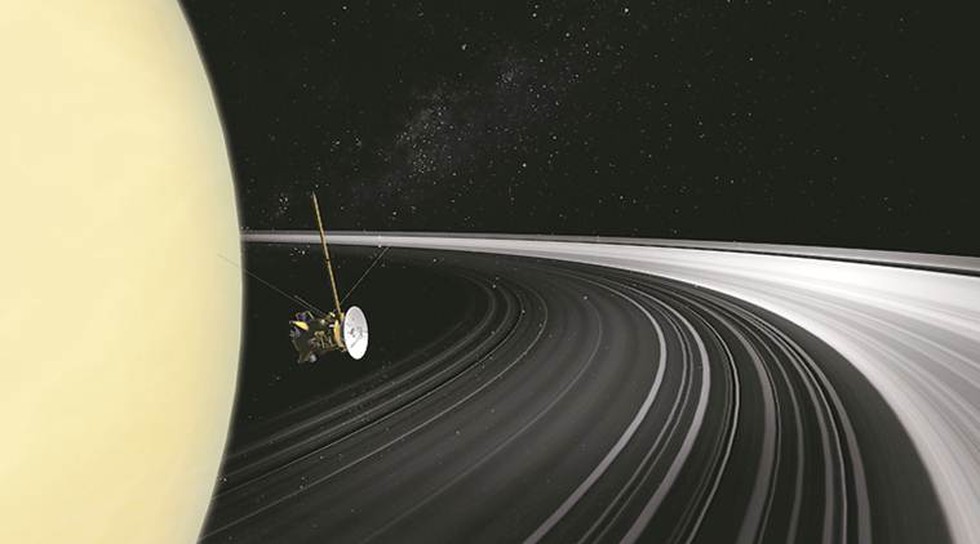About:
- Saturn is encircled by rings.
- Discovery: Although the rings were first observed by telescopes centuries ago, knowledge about their formation and composition has been relatively slow coming from four robotic spacecraft that have visited Saturn — Pioneer 11, Voyager 1, Voyager 2 and Cassini.
- Features:
- The rings consist of a large number of small particles that are either icy snowballs or ice-covered rocks.
- They are about 400,000 km — equivalent to the distance between the Earth and the Moon — but are as little as 100 m thick.
- There are many rings — perhaps 500 to 1,000 — and there are also gaps within them.
- Particles range in size from “too tiny to see” to “the size of a bus”.
Recent findings by Cassini:
- The recent finding comes from Cassini’s final trajectory. In September 2017, the NASA spacecraft made its death plunge into Saturn’s atmosphere, and one of its last acts was to coast between the planet and its rings.
- Age of rings: The study has concluded that Saturn hasn’t always had rings. It suggests that the rings formed between 100 million and 10 million years ago, and are thus much younger than the 4.5-billion-year-old planet.
- Significance: Their young age puts to rest a long-running argument among planetary scientists.
- Some thought that the rings formed along with the planet itself, 4.5 billion years ago, from icy debris remaining in orbit after the formation of the Solar System.
- Others thought the rings were very young and that Saturn had, at some point, captured an object from the Kuiper belt or a comet and gradually reduced it to orbiting rubble.
